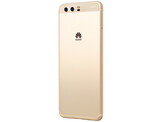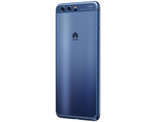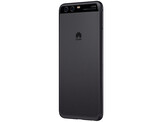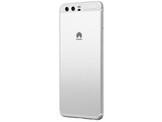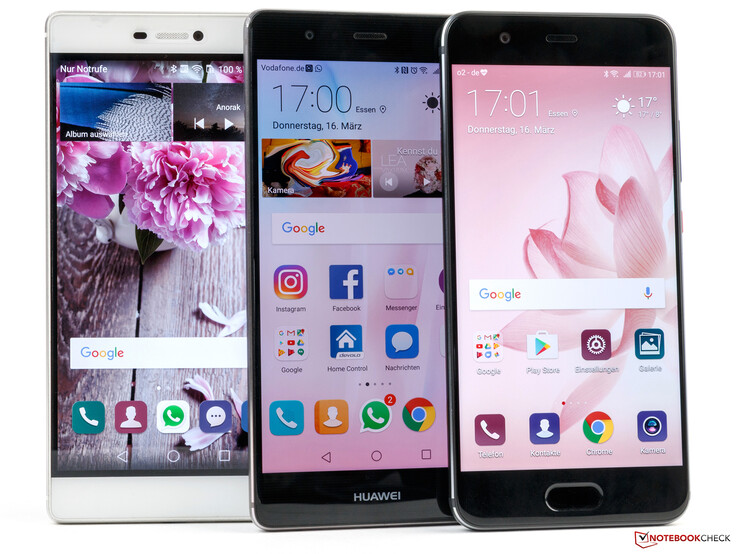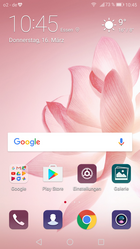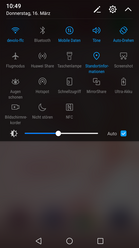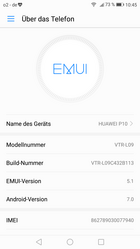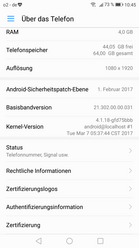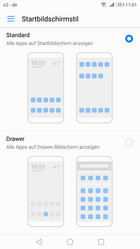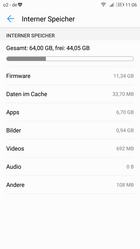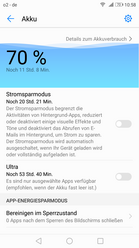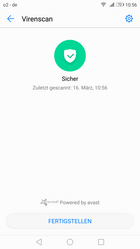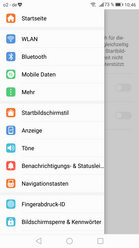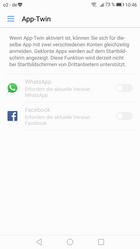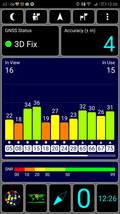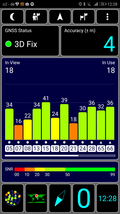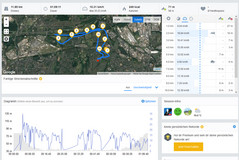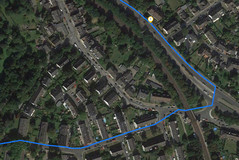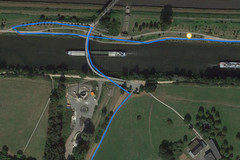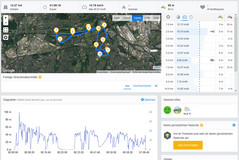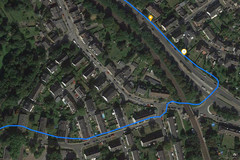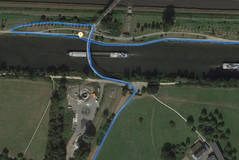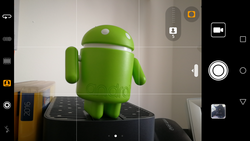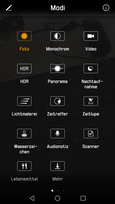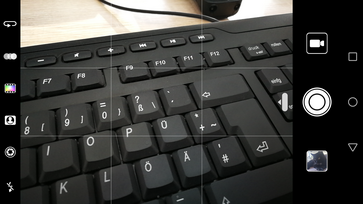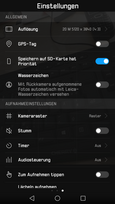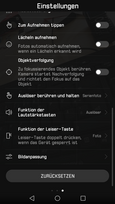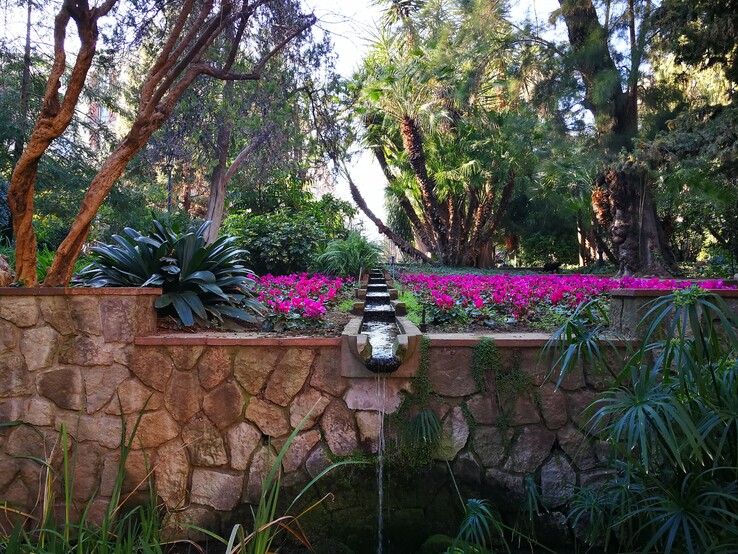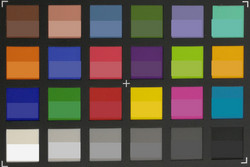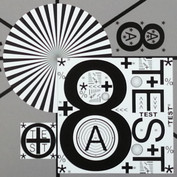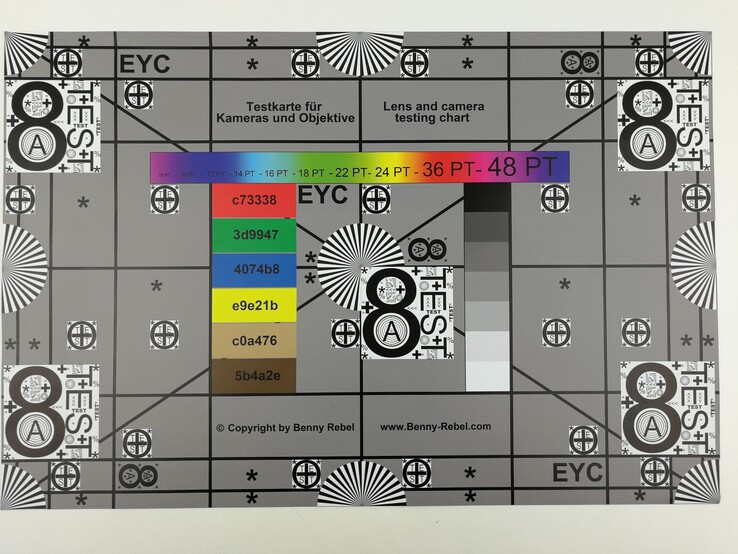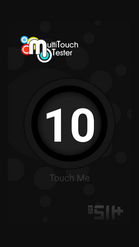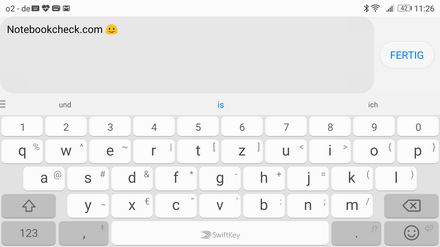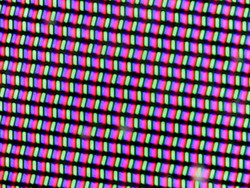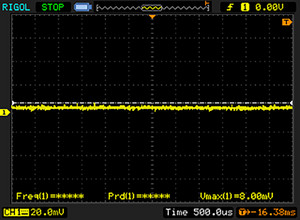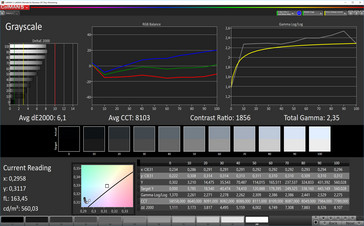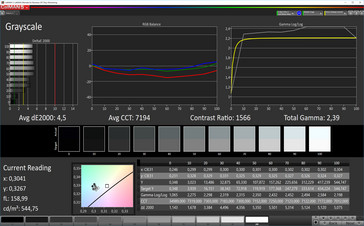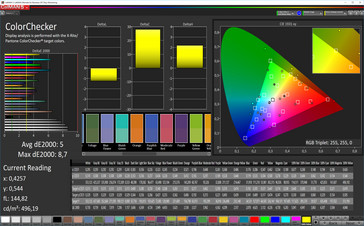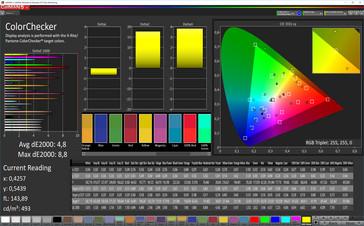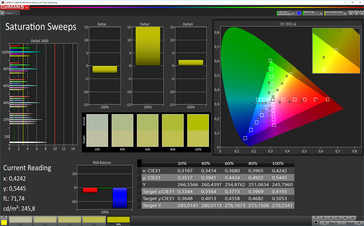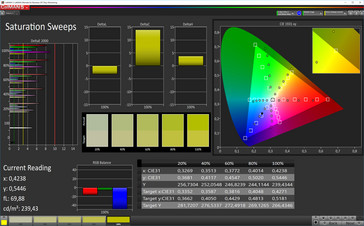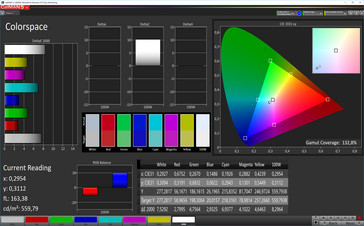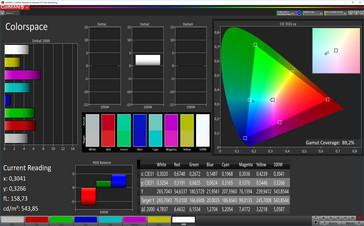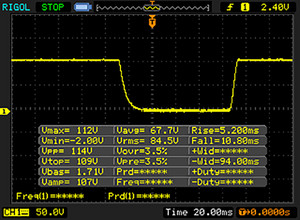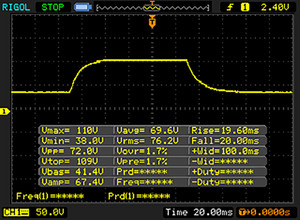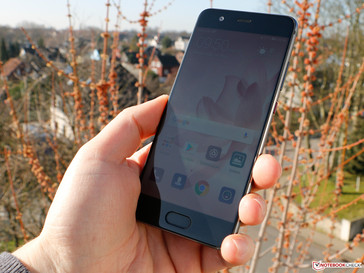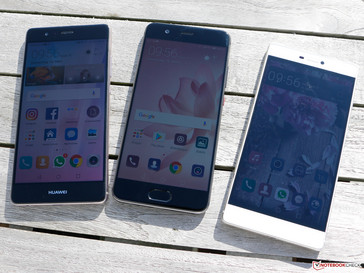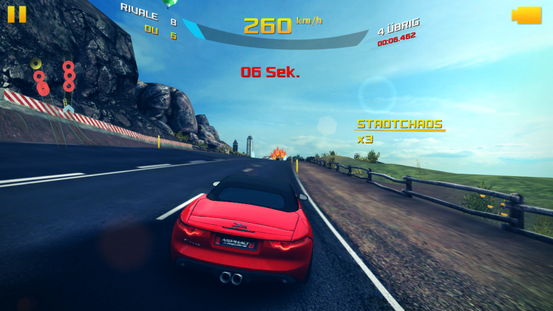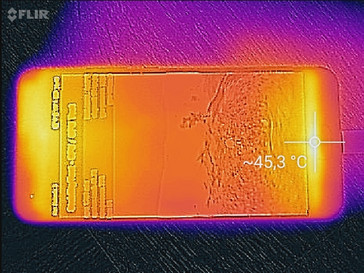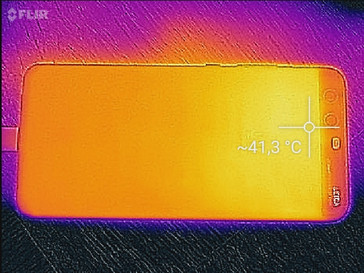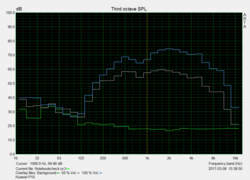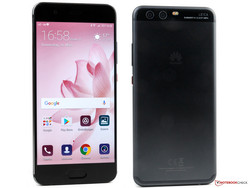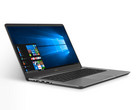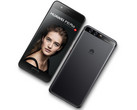Huawei P10 Smartphone Review
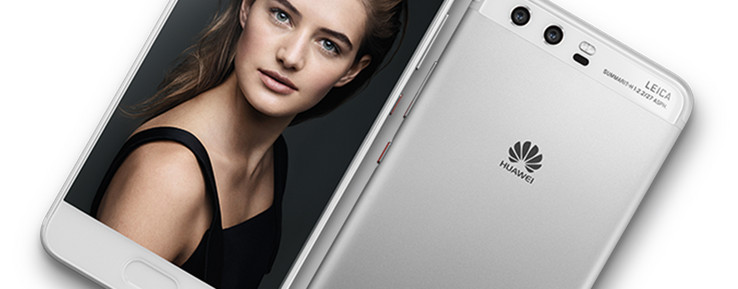
For the original German review, see here.
Huawei's P10 is a successful upgrade of its predecessor. Opposing the trend, the screen has been reduced slightly to 5.1-inches now and thus offers exactly the same diameter as the category leader Galaxy S7 by Samsung. The proprietary Kirin 960, which is also installed in the Mate 9, is responsible for calculations. Compared with the predecessor, the memory has grown and now equals 4 GB of working memory and 64 GB of internal storage (P9: 3 GB RAM, 32 GB flash). With LTE Cat.12, the P10 can also achieve the highest download speeds when on the go. The same camera module is used as in the Mate 9, but its software has allegedly been optimized. The battery capacity has also grown by 200 to 3200 mAh. Unfortunately, the P10 is also again a bit more expensive and this version costs 599 Euros (~$646).
A Plus model that will have an even higher price of 749 Euros (~$808) will also be launched. It has a bigger screen with a higher resolution (5.5-inch, 2560x1440 pixels), more memory (6 GB RAM, 128 GB flash), a stronger battery (3750 mAh), an infrared transmitter, and a more light-sensitive Leica dual-camera.
However, the rivals in the forms of Samsung's Galaxy S7, Sony's Xperia XZ, HTC's 10, Apple's iPhone 7, LG's G6, and the Moto Z are quite able to compete.
Case
Huawei's P10 will be offered in even more colors at its launch in Europe: Mystic Silver, Graphite Black, Prestige Gold, and Dazzling Blue. Its dimensions are very similar to those of the P9 although its screen has shrunk. This is noticed in the somewhat bigger casing area above and below the screen. The fingerprint scanner that is now situated on the front likely needs a bit more room here.
At a height of just below seven millimeters, the P10 is very slim and is not too heavy at 144 grams. It is pleasant to hold thanks to its curved edges and feels good. The aluminum casing's stiffness is simply superb, but it can be twisted when using enough force. The glass on the front can also be pressed visibly, but it only produces a minor wave formation on the LTPS screen.
The card tray is also made of aluminum but its color tone is completely different in our black review sample, and it thus stands out very visibly from the rest of the smartphone. Then again, it closes very flush with the aluminum body. The gaps basically do not give reason for complaint as they are narrow and even.
Unfortunately, Huawei's P10 does not have the trendy but also practical dust and water IP certification. However, it also has the splash-proof nano-coating known from the P9.
Connectivity
The micro-SD card slot in Huawei's P10 supports all common formats and memory card capacities, which reached up to 256 GB at test time. The inserted memory can be set up as the standard drive, but apps are still stored in the internal storage although their additional data is moved to the micro-SD.
The USB Type-C port only transfers data in the 2.0 standard, but it supports OTG, making it possible to connect portable storage devices or other peripherals to the smartphone. The interface cannot output audio or video signals. Like in the P9, it is possible to choose whether a PC can only access photos, the entire data storage or if the smartphone is only to be recharged when connected to a computer. Furthermore, a virtual CD drive is created on the computer, which can be installed via the HiSuite software. It allows creating local backups for the smartphone, manage data or installing updates.
This time, only a single-SIM model will be offered in Germany. The dual-SIM version with a hybrid slot will be available in other countries. All models feature NFC and Bluetooth 4.2. A notification LED is also present, but it cannot be adapted.
Software
Huawei's P10 uses Google's Android 7.0 Nougat operating system and covers it with the company's own EMUI 5.1 user interface, which is very similar to the 5.0 version in the Mate 9. The fixed integration of a virus scanner by Avast and a block list that provides many settings are some new features. Google's security patches are dated February 1, 2017, which is quite up-to-date. If the update policy is like that of the Mate 9, it should be updated regularly.
However, the EMUI 5.x and its new features apparently need a lot of storage. The firmware of Huawei's P10 reserves a total of 11.34 GB. It is just 6.92 GB in the P9 with Android 7.0.
Update 11/7/2017: The firmware update to version B133 has also updated the security patch level to 5th April 2017.
Update 3/3/2018: Firmware version VTR-L09 8.0.0.360 containing the upgrade to Android 8.0 Oreo and EMUI 8.0 has been released. Security patches have been brought up-to-date (2/1/2018).
Update 5/2/2018: Firmware version VTR-L09 8.0.0.365 has been released. It contains a patch to optimize UI text rendering and updates Android’s security patches to 3/1/2018.
Communication and GPS
In the best case, Huawei's P10 accesses mobile Internet via LTE Cat.12 and allows downloads at a speed of up to 600 MBit/s and uploads at up to 75 MBit/s. However, we liked the smartphone's broad frequency range even more than the fast, theoretical maximum speeds. It supports four GSM, seven 3G, and 21 LTE bands. The manufacturer also installs four antennas for the mobile network into the handset. We did not observe any reception limitations in a major city in practice. We always had a strong LTE signal.
Huawei has allegedly also improved the Wi-Fi module. All up-to-date protocols are supported with the IEEE 802.11 a/b/g/n/ac standards, and thus both the 2.4 and 5.0 GHz network. Furthermore, the MIMO antenna technology has moved into the P10. Unfortunately, the test does not reflect this. Transmission speeds of over 300 MBit/s should easily be possible with these specifications. However, the P10 remains behind the expectations. Some smartphones that only support 2.4 GHz receive data faster. Huawei's P10 does not make a good impression even in the more frequented network in the test with our Linksys EA8500 reference router, and it only achieves mediocre rates here (2.4 GHz: receive @ 42 MBit/s, transmit @ 45.7 MBit/s). The signal attenuation of -42 dBm is, however, on a good level. This changes at a greater distance to the router. The signal quality decreases noticeably five meters (~16 feet) away from the router (-61 dBm, one interior wall), and video streaming becomes impossible at approximately 12 meters (-81 dBm, ~39 feet), and playback no longer runs smoothly.
Update 05/13/2017: Another test model confirms the low transfer rates of the Wi-Fi module; higher results are just not possible. We assume that the advertised MIMO antenna technology is not available for the P10, especially since the note is not available anymore, neither on the spec sheet, nor on the official website. We therefore reduced the sub-rating in the connectivity section.
Update 11/7/2017: Huawei has also boosted the Wi-Fi connection speed considerably with the firmware update to version B133, and browsing in the network is now fast. Although it still cannot compete with the rivals that have MIMO technology, the rates are great for an AC Wi-Fi module. The previous rates are still shown in the comparison chart.
| Networking | |
| iperf3 transmit AX12 | |
| Apple iPhone 7 (Klaus I211) | |
| Huawei P10 | |
| Samsung Galaxy S7 | |
| Huawei P9 | |
| iperf3 receive AX12 | |
| Apple iPhone 7 (Klaus I211) | |
| Huawei P10 | |
| Samsung Galaxy S7 | |
| Huawei P9 | |
Huawei's P10 uses GPS, GLONASS, BeiDou, and Galileo for localization. The smartphone found our position quickly and accurately even indoors, and it was even a bit faster outdoors.
To evaluate the accuracy better, we take the P10 on a short bike trip where it has to face a comparison with Garmin's Edge 500. Although the smartphone does not trace the route as accurately as the bike computer, it still presents good results. The reason for this is the occasionally too long time difference between logging the positions, although it is relatively short in some places, such as where we crossed the bridge.
Telephone and Call Quality
The call quality of Huawei's P10 is on a good level, but it is not as convincing as the Mate 9 in our opinion. We are well-intelligible when the smartphone is held to the ear and our contact also confirms a good call quality. Both microphones prove to be even more wind sensitive than the P9, but they cannot be criticized otherwise. It is not possible to set directional microphones in hands-free mode and several noise sources caused interruptions.
Cameras
A camera co-engineered with Leica is installed on the front of Huawei's P10. It offers 8 MP and a nominal aperture of f/1.9. Unlike the Mate 9, it does not have autofocus but only fix focus. In return, a new portrait mode that has an additional artist filter that places vignetting around the photographed person and a five-level beauty mode are installed. The lens also detects when several people are standing in front of the smartphone and adapts the photo section accordingly. The photo quality is decent and is absolutely sufficient for social media. However, some degree of blurriness is visible in full size when the focus was not set properly. Videos can be recorded in Full HD. The manufacturer provides an electronic image stabilizer and beauty mode for this.
The primary cameras on the rear of Huawei's P10 are technically identical with those in Huawei's Mate 9. The Leica dual-camera (Summarit-H 1:2.2/27mm ASPH) has a 12 MP RGB camera and a 20 MP monochrome lens. The black-white sensor is to capture more image data in low light conditions and can then combine them to one picture with the RGB lens. Of course, it is possible to shoot pure black/white photos. The second sensor additionally collects data for portrait mode so that a soft bokeh can be placed around the photographed object or person. Huawei states that it has improved the software. The reworked portrait mode that covers the use of the front camera belongs to these. However, the higher-quality lenses and sensor deliver a considerably better outcome. We liked the produced bokeh, and it no longer looks like a simple vignetting filter around the object.
The photos of the Leica dual-camera in the P10 are really good and convince with a good sharpness and high dynamic range in daylight. The camera's shutter speed is very fast for landscape and still life photos, but good timing is essential when fast-moving objects are photographed as the focus needs a bit longer.
Huawei provides the user with several modes for different situations. Unfortunately, the HDR mode still has to be set manually in the P10. The food mode saturates colors too strongly. The manual mode has not been reworked and offers quick access on all important settings, such as shutter speed (1/4000 - 30 sec), light sensitivity (ISO 50-3200), and a manual white balance (2800-7000K). Raw-data photos (DNG) can also be saved, but not directly on an optional micro-SD card. The P10 also features the new hybrid zoom that functions just as well as in the Mate 9. However, expanding the digital zoom up to times 10 (see screenshot) does not make much sense in our opinion as a very steady hand is required and the autofocus point has to be set well manually for achieving a feasible outcome.
The P10 still produces relatively good photos in low ambient light, but rivals like the Galaxy S7 or Pixel XL are much better here. The comparatively small aperture (f/2.2) and relatively tiny pixels (1.25 µm) are noticed unfavorably. Nevertheless, the P10's low-light performance is decent and it captures more from the present residual light than other smartphones.
Huawei's P10 records videos in a maximum of Ultra HD (4K, 3840x2160 pixels, 30 FPS). However, the user cannot use any of the features, such as image stabilizer or focus tracking. These functions are also only available in the 30 FPS version in Full HD. It is naturally possible to record at 60 frames per second, but like in the P9, the low-light videos are much darker than with the 30 FPS option. The image quality is good, but the colors in the video were a bit too saturated for our taste. Especially, light brown tones have a slight reddish tint and the camera tends to overexpose bright surfaces in high-contrast scenes.
We analyzed Leica's dual-camera in Huawei's P10 under defined light conditions. We first photographed X-Rite's ColorChecker Passport to examine the color accuracy. We did not edit the photo afterward or use filters for this. The colors are very saturated already in standard mode and the white balance is relatively warm. Light skin tones have a minor reddish tint that is not prominent enough to be annoying. Black looks rich and ensures good contrasts.
We photographed our test chart under identical conditions. The P10 delivers the best sharpness in the image center in monochrome mode and all details of the test chart are maintained. However, the RGB sensor fails with fine hues but still presents a good photo performance. The fonts on the color gradient are also captured clearly. The sharpness decreases toward the photo's edges at a normal degree.
The P10 can also create 20 MP color photos with additional data from the monochrome sensor. However, we would not recommend this as the additional pixels do not have a positive effect on the details in the photo. The opposite, unfortunately, is the case and many fine outlines are lost. It looks similar in the "soft colors" and "vivid colors" modes, which increase the photo's contrast and saturation and which look really good on the screen. But when zoomed to maximum, it becomes visible that fine outlines simply disappear and, in the case of the stronger filter, they even become a bit blurred. This will not make a difference for social networking, but users who want a hard copy or even create a photo album with photos from the P10 should not use the "vivid colors" mode.
We also examined the hybrid zoom of Huawei's P10 and were pleasantly surprised. The x2 zoom delivers really good photo results. Even fine details are captured well, and they are even more visible than in photos without zoom thanks to the strong field of depth. Minor losses have to be accepted on rounded objects that exhibit minor edges in maximum zoom due to the sharpness. Outlines fray increasingly and details are lost in large-scale zooms. Although it is not possible to shoot really appealing photos with it, the photo results are relatively good for such a strong digital zoom.
Accessories and Warranty
Huawei's P10 smartphone comes with a transparent plastic bumper, a power supply with a maximum nominal output of 22.5 watts (5.0 volts, 2.0 amperes; 4.5 volts, 5 amperes; 5.0 volts, 4.5 amperes), a USB cable (Type-C to Type-A), a SIM tool, a headset, and quick-start guide. The manufacturer optionally offers diverse flip cases.
A 24-month warranty period is included. It can be extended to 36 months via free registration in the HiCare app. VIP members receive a warranty on the screen and a product replacement warranty for the first three months in both cases.
Please see our Guarantees, Return Policies and Warranties FAQ for country-specific information.
Input Devices and Handling
The capacitive touchscreen of Huawei's P10 has a very gliding-friendly surface that responds very accurately everywhere. It supports up to 10 simultaneous inputs. A notable change compared to Huawei's P9 is that the fingerprint scanner is now on the casing's front and not on its rear. This is too bad as the extended functionality of the rear-sided scanner, such as scrolling through the gallery or displaying the notification center, facilitated one-handed use.
However, the new fingerprint scanner also has advantages and can be used instead of the onscreen buttons. Huawei uses the same gesture control here as in the company's MediaPad M3 or Lenovo's ZUK Z2. The user is brought back to the home screen when pressing the touch surface for a prolonged time; short tapping replaces the back button. Horizontal swiping opens the task manager, but this did not always function reliably in the test when we used our thumb. We had to occasionally repeat this gesture then. The fingerprint scanner functions reliably and unlocks the handset quickly. Knuckle Touch is installed again but has not been developed any further compared with the P9.
The physical keys have a crisp pressure point and make an overall very high-quality and reliable impression. Like in the Mate 9, SwiftKey's keyboard layout is preloaded. Another keyboard can be downloaded from Google's Play Store when preferred.
Display
The size of the LTPS panel in Huawei's P10 has been reduced a bit compared with the predecessor, and it now has a diagonal of 5.1-inches. Its resolution of 1920x1080 pixels leads to a pixel density of approximately 432 PPI. Thus, content is razor-sharp.
Huawei has managed to increase the screen's brightness a bit, and it now achieves up to 604 cd/m². The P9 delivers about 20 cd/m² less, but its illumination and average brightness are better. Particularly, the brightness distribution of the P10 could be more homogeneous even if this minor shortcoming is not seen in everyday use. What we did notice, though, is the visibly lower contrast. The measurements confirm our impression; the comparatively high black value leads to a visibly lower contrast than in the predecessors. The direct comparison even shows that it get worse from one generation to the next, which is due to the simultaneous increase in brightness. When we rerun the tests with equally distributed bright and dark areas on the screen (APL50), both the brightness in the screen center (527 cd/m²) and the black value (0.45 cd/m²) become slightly worse and correspond to a brightness of 1171:1. The P10 achieves up to 555 cd/m² when the ambient light sensor is enabled.
It has to be noted positively that Huawei does not use PWM in its P10. We did not observe clouding on our review sample, either. A blue light filter (anti-eyestrain) that has to be turned on and off manually is also installed.
| |||||||||||||||||||||||||
Brightness Distribution: 86 %
Center on Battery: 547 cd/m²
Contrast: 1272:1 (Black: 0.43 cd/m²)
ΔE Color 4.8 | 0.5-29.43 Ø5
ΔE Greyscale 4.5 | 0.57-98 Ø5.3
Gamma: 2.39
| Huawei P10 LTPS, 1920x1080, 5.10 | Huawei P9 IPS-NEO, JDI, 1920x1080, 5.20 | Huawei P8 IPS-NEO, 1920x1080, 5.20 | Samsung Galaxy S7 SAMOLED, 2560x1440, 5.10 | Apple iPhone 7 IPS, 1334x750, 4.70 | Sony Xperia XZ IPS, 1920x1080, 5.20 | HTC 10 Super LCD 5, 2560x1440, 5.20 | |
|---|---|---|---|---|---|---|---|
| Screen | 8% | 3% | 21% | 31% | -8% | 9% | |
| Brightness middle | 547 | 582 6% | 453 -17% | 350 -36% | 556 2% | 544 -1% | 445 -19% |
| Brightness | 556 | 563 1% | 439 -21% | 351 -37% | 519 -7% | 521 -6% | 434 -22% |
| Brightness Distribution | 86 | 91 6% | 91 6% | 98 14% | 90 5% | 93 8% | 93 8% |
| Black Level * | 0.43 | 0.38 12% | 0.28 35% | 0.34 21% | 0.37 14% | 0.36 16% | |
| Contrast | 1272 | 1532 20% | 1618 27% | 1635 29% | 1470 16% | 1236 -3% | |
| Colorchecker dE 2000 * | 4.8 | 4.4 8% | 4.7 2% | 2.04 57% | 1.3 73% | 5.8 -21% | 2.8 42% |
| Colorchecker dE 2000 max. * | 8.8 | 7.4 16% | 3.25 63% | 2.6 70% | 9.8 -11% | 5.8 34% | |
| Greyscale dE 2000 * | 4.5 | 4.8 -7% | 5.03 -12% | 1.63 64% | 1.9 58% | 7.2 -60% | 3.7 18% |
| Gamma | 2.39 92% | 2.2 100% | 2.27 97% | 2.07 106% | 2.26 97% | 2.18 101% | 2.31 95% |
| CCT | 7194 90% | 6175 105% | 7439 87% | 6391 102% | 6818 95% | 8619 75% | 7164 91% |
| Color Space (Percent of AdobeRGB 1998) | 77.78 | 72.04 | 86.86 | 63.15 | |||
| Color Space (Percent of sRGB) | 99.44 | 99.35 | 99.71 |
* ... smaller is better
Screen Flickering / PWM (Pulse-Width Modulation)
| Screen flickering / PWM not detected | |||
In comparison: 53 % of all tested devices do not use PWM to dim the display. If PWM was detected, an average of 17933 (minimum: 5 - maximum: 3846000) Hz was measured. | |||
We examined the color reproduction accuracy of the LTPS panel in Huawei's P10 with the photospectrometer and CalMAN analysis software. Not much has changed compared with the P9 and P8.
Content looks very cool on the screen in the standard setting. This leads to a bluish tint in the grayscale levels. This is enhanced even more when the color temperature is set to cool and leaves a very unnatural impression. The warm profile comes closer to an ideal reproduction, but it is still a bit too cool. The colors also have a visible deviation from the ideal and are quite saturated. Other high-end smartphones are considerably more accurate, and thus Huawei has quite some room for improvement here.
Like in the Mate 9, Huawei also relies on a calibration in the P3 color space standard for its P10.
Display Response Times
| ↔ Response Time Black to White | ||
|---|---|---|
| 16 ms ... rise ↗ and fall ↘ combined | ↗ 5.2 ms rise | |
| ↘ 10.8 ms fall | ||
| The screen shows good response rates in our tests, but may be too slow for competitive gamers. In comparison, all tested devices range from 0.1 (minimum) to 240 (maximum) ms. » 32 % of all devices are better. This means that the measured response time is better than the average of all tested devices (21.5 ms). | ||
| ↔ Response Time 50% Grey to 80% Grey | ||
| 39.6 ms ... rise ↗ and fall ↘ combined | ↗ 19.6 ms rise | |
| ↘ 20 ms fall | ||
| The screen shows slow response rates in our tests and will be unsatisfactory for gamers. In comparison, all tested devices range from 0.2 (minimum) to 636 (maximum) ms. » 55 % of all devices are better. This means that the measured response time is worse than the average of all tested devices (33.8 ms). | ||
Huawei's P10 makes a good impression outdoors and primarily convinces with its high brightness and fast responding ambient light sensor. The somewhat low contrast is not noticed unfavorably when compared with the P8. The opposite: The review sample remains well-legible even in the direct springtime sun.
Performance
Like in the Mate 9, a HiSilicon Kirin 960 SoC provides Huawei's P10 with plenty of computing power. The chip is built in the 16-nanometer process and has two CPU clusters with four cores each. While the performance cluster is based on strong ARM Cortex A73 cores that can clock at up to 2.4 GHz, Cortex A73 cores that clock at up to 1.8 GHz are used in the energy-efficient cluster. A decent 4 GB of LPDDR4 working memory and the high-performance ARM Mali-G71 MP8 support the SoC.
Huawei's P10 is on a very good level in the benchmarks. Only OnePlus' 3T and the iPhone 7 defeat it in the AnTuTu system benchmark. The review sample also presents very good scores in PCMark for Android. The P10 has the fastest CPU performance in the comparison field in the multi-core test of Geekbench 4. However, the P10 remains behind the expectations a bit in the 3DMark Physics tests, which could point to CPU throttling during load, which we will examine in the "Temperature" chapter.
The GPU's performance is also really good, but it cannot quite reach the performance of up-to-date premium GPUs, such as the Adreno 530. The performance difference is even more evident in more intricate graphics calculations with performance-driven interfaces, such as OpenGL ES 3.1. The Android rivals manage up to 33% more frames. Apple's A10 SoC leaves its rivals miles behind in these sections.
| AnTuTu v6 - Total Score (sort by value) | |
| Huawei P10 | |
| Huawei P9 | |
| Samsung Galaxy S7 Edge | |
| Apple iPhone 7 | |
| Lenovo Moto Z | |
| Sony Xperia XZ | |
| HTC 10 | |
| Huawei Mate 9 | |
| OnePlus 3T | |
| Geekbench 4.0 | |
| 64 Bit Single-Core Score (sort by value) | |
| Huawei P10 | |
| Huawei P9 | |
| Samsung Galaxy S7 Edge | |
| Apple iPhone 7 | |
| Lenovo Moto Z | |
| Sony Xperia XZ | |
| Huawei Mate 9 | |
| OnePlus 3T | |
| 64 Bit Multi-Core Score (sort by value) | |
| Huawei P10 | |
| Huawei P9 | |
| Samsung Galaxy S7 Edge | |
| Apple iPhone 7 | |
| Lenovo Moto Z | |
| Sony Xperia XZ | |
| Huawei Mate 9 | |
| OnePlus 3T | |
| GFXBench (DX / GLBenchmark) 2.7 | |
| T-Rex Onscreen (sort by value) | |
| Huawei P10 | |
| Huawei P9 | |
| Samsung Galaxy S7 Edge | |
| Apple iPhone 7 | |
| Lenovo Moto Z | |
| Sony Xperia XZ | |
| HTC 10 | |
| Huawei Mate 9 | |
| OnePlus 3T | |
| 1920x1080 T-Rex Offscreen (sort by value) | |
| Huawei P10 | |
| Huawei P9 | |
| Samsung Galaxy S7 Edge | |
| Apple iPhone 7 | |
| Lenovo Moto Z | |
| Sony Xperia XZ | |
| HTC 10 | |
| Huawei Mate 9 | |
| OnePlus 3T | |
| GFXBench 3.0 | |
| on screen Manhattan Onscreen OGL (sort by value) | |
| Huawei P10 | |
| Huawei P9 | |
| Samsung Galaxy S7 Edge | |
| Apple iPhone 7 | |
| Lenovo Moto Z | |
| Sony Xperia XZ | |
| HTC 10 | |
| Huawei Mate 9 | |
| OnePlus 3T | |
| 1920x1080 1080p Manhattan Offscreen (sort by value) | |
| Huawei P10 | |
| Huawei P9 | |
| Samsung Galaxy S7 Edge | |
| Apple iPhone 7 | |
| Lenovo Moto Z | |
| Sony Xperia XZ | |
| HTC 10 | |
| Huawei Mate 9 | |
| OnePlus 3T | |
| GFXBench 3.1 | |
| on screen Manhattan ES 3.1 Onscreen (sort by value) | |
| Huawei P10 | |
| Huawei P9 | |
| Samsung Galaxy S7 Edge | |
| Apple iPhone 7 | |
| Lenovo Moto Z | |
| Sony Xperia XZ | |
| HTC 10 | |
| Huawei Mate 9 | |
| OnePlus 3T | |
| 1920x1080 Manhattan ES 3.1 Offscreen (sort by value) | |
| Huawei P10 | |
| Huawei P9 | |
| Samsung Galaxy S7 Edge | |
| Apple iPhone 7 | |
| Lenovo Moto Z | |
| Sony Xperia XZ | |
| HTC 10 | |
| Huawei Mate 9 | |
| OnePlus 3T | |
| PCMark for Android | |
| Work performance score (sort by value) | |
| Huawei P10 | |
| Huawei P9 | |
| Samsung Galaxy S7 Edge | |
| Lenovo Moto Z | |
| Sony Xperia XZ | |
| HTC 10 | |
| Huawei Mate 9 | |
| OnePlus 3T | |
| Work 2.0 performance score (sort by value) | |
| Huawei P10 | |
| Huawei P9 | |
| Sony Xperia XZ | |
| HTC 10 | |
| Huawei Mate 9 | |
| Lightmark - 1920x1080 1080p (sort by value) | |
| Huawei P10 | |
| Huawei P9 | |
| Samsung Galaxy S7 Edge | |
| Lenovo Moto Z | |
| Huawei Mate 9 | |
| Basemark ES 3.1 / Metal - offscreen Overall Score (sort by value) | |
| Huawei P10 | |
| Huawei P9 | |
| Samsung Galaxy S7 Edge | |
| Apple iPhone 7 | |
| Apple iPhone 7 | |
| Lenovo Moto Z | |
| HTC 10 | |
| Huawei Mate 9 | |
| Epic Citadel - Ultra High Quality (sort by value) | |
| Huawei P10 | |
| Huawei P9 | |
| Samsung Galaxy S7 Edge | |
| Lenovo Moto Z | |
| Huawei Mate 9 | |
We use the preloaded Google Chrome browser (version 56) for the browser benchmarks. Although Huawei's P10 delivers good results throughout the test, they are not top-rate. Seen purely subjectively, Internet browsing is smooth and fast.
| WebXPRT 2015 - Overall (sort by value) | |
| Huawei P10 | |
| Huawei P9 | |
| Samsung Galaxy S7 Edge | |
| Apple iPhone 7 | |
| Lenovo Moto Z | |
| Sony Xperia XZ | |
| HTC 10 | |
| Huawei Mate 9 | |
| OnePlus 3T | |
| BaseMark OS II - Web (sort by value) | |
| Huawei P10 | |
| Huawei P9 | |
| Samsung Galaxy S7 Edge | |
| Apple iPhone 7 | |
| Lenovo Moto Z | |
| Sony Xperia XZ | |
| HTC 10 | |
| Huawei Mate 9 | |
| OnePlus 3T | |
| Octane V2 - Total Score (sort by value) | |
| Huawei P10 | |
| Huawei P9 | |
| Samsung Galaxy S7 Edge | |
| Apple iPhone 7 | |
| Lenovo Moto Z | |
| Sony Xperia XZ | |
| HTC 10 | |
| Huawei Mate 9 | |
| OnePlus 3T | |
| Mozilla Kraken 1.1 - Total (sort by value) | |
| Huawei P10 | |
| Huawei P9 | |
| Samsung Galaxy S7 Edge | |
| Apple iPhone 7 | |
| Lenovo Moto Z | |
| Sony Xperia XZ | |
| HTC 10 | |
| Huawei Mate 9 | |
| OnePlus 3T | |
| JetStream 1.1 - Total Score (sort by value) | |
| Huawei P10 | |
| Huawei P9 | |
| Samsung Galaxy S7 Edge | |
| Apple iPhone 7 | |
| Lenovo Moto Z | |
| Sony Xperia XZ | |
| HTC 10 | |
| Huawei Mate 9 | |
| OnePlus 3T | |
| Vellamo 3.x - Browser (sort by value) | |
| Huawei P10 | |
| Huawei P9 | |
| Samsung Galaxy S7 Edge | |
| Lenovo Moto Z | |
| Huawei Mate 9 | |
* ... smaller is better
The extremely fast UFS 2.1 storage in Huawei's P10 surpasses everything we have in our database and places itself at the top of the comparison field in all areas in terms of performance. Unfortunately, this cannot be said about the smartphone's micro-SD slot that presents a poor performance for a high-end product. It does not even come close to exhausting our Toshiba Exceria Pro M401 (read: 95 MB/s, write: 80 MB/s) reference card.
Approximately 50 GB of the internal memory's nominal 64 GB can be used after using the P10 for the first time.
Update 05/13/2017: The storage gate (we reported) created a lot of attention and although we were fortunate to get a smartphone equipped with UFS 2.1 storage, this is not the case for every user. You will mainly notice the difference to the eMMC storage when you install apps and the loading times of complex apps will be affected as well. We therefore reduce the rating for the storage performance.
| Huawei P10 | Huawei P9 | Lenovo Moto Z | Sony Xperia XZ | HTC 10 | Samsung Galaxy S7 | LG G5 | ZTE Axon 7 | |
|---|---|---|---|---|---|---|---|---|
| AndroBench 3-5 | -49% | -8% | -48% | -20% | -16% | -20% | -13% | |
| Sequential Read 256KB | 738 | 281.3 -62% | 439.7 -40% | 281 -62% | 275.1 -63% | 483.8 -34% | 427.6 -42% | 406.5 -45% |
| Sequential Write 256KB | 189.8 | 72.2 -62% | 168.3 -11% | 138 -27% | 115.6 -39% | 145.7 -23% | 141.3 -26% | 150.9 -20% |
| Random Read 4KB | 168.4 | 39 -77% | 117.2 -30% | 71.5 -58% | 29.92 -82% | 85.9 -49% | 89.3 -47% | 121.1 -28% |
| Random Write 4KB | 152.3 | 47.45 -69% | 74.9 -51% | 10.5 -93% | 15.89 -90% | 16.01 -89% | 16.22 -89% | 16.22 -89% |
| Sequential Read 256KB SDCard | 54.2 | 55 1% | 78.5 45% | 33.5 -38% | 83.3 54% | 72.3 33% | 78.5 45% | 78.4 45% |
| Sequential Write 256KB SDCard | 32.19 | 24.83 -23% | 45.64 42% | 29.8 -7% | 65.4 103% | 53.6 67% | 45.53 41% | 51.3 59% |
Games
The ARM Mali-G71 MP8 graphics unit inside Huawei's P10 presents a very good gaming performance and also supports modern graphics APIs, such as OpenGL ES 3.x and Vulkan 1.0. Unfortunately, we cannot provide any gaming frame rates as our test app did not load. However, we are optimistic that we can publish them soon.
Based on our experiences with this GPU in Huawei's Mate 9 and our practical impressions, we can confirm the P10's outstanding gaming qualities. Both more demanding games, such as Asphalt 8 and more basic games like Bubble Witch 3 Saga run smoothly, and they are launched quickly providing that the complete game is in the handset's internal storage.
The touchscreen and sensors function impeccably. Only the speaker on the lower edge is covered quickly in landscape mode.
Emissions
Temperature
The surfaces of Huawei's P10 get quite warm in some places just in idle. The area around the fingerprint scanner warms up palpably and reaches up to 35.6 °C. The rates remain below 30 °C on the rear. The temperatures climb to 40 °C over the entire surface and even up to 44.6 °C on the front. Although this is quite warm, it is absolutely uncritical.
We tested whether the Kirin 960 can cope with the inner temperatures with the GFXBench Battery test. We performed both the T-Rex test (OpenGL ES 2.0) and the demanding Manhattan test (OpenGL ES 3.1). The performance dropped quite soon in the first and reached its intermediate low point with a performance minus of 22%. A performance loss of even more than 35% was recorded in the Manhattan test.
(±) The maximum temperature on the upper side is 44.6 °C / 112 F, compared to the average of 35 °C / 95 F, ranging from 21.9 to 56 °C for the class Smartphone.
(±) The bottom heats up to a maximum of 40.9 °C / 106 F, compared to the average of 33.8 °C / 93 F
(±) In idle usage, the average temperature for the upper side is 32.1 °C / 90 F, compared to the device average of 32.7 °C / 91 F.
Speaker
The mono speaker in Huawei's P10 provides a surprisingly good sound experience that convinced us particularly at medium volume. However, the sound becomes a bit too high at maximum volume since the lower trebles are emphasized a little too much. Particularly, the mids are relatively linear, which is a good performance for a speaker of this size.
The included headphones do not stream a pleasant sound particularly at high volumes, and they distort audibly in the high tone range. It is not possible to enjoy music with them. Subjectively, the audio jack delivers a low-noise and clear signal that can be quite pleasing with better headphones.
We also examined audio streaming via Bluetooth. Huawei unfortunately does not install a hi-res solution, such as aptX, but it only uses the standard protocol that makes an audible difference when streaming music. However, the stability and range of the connection are very good.
Huawei P10 audio analysis
(+) | speakers can play relatively loud (82.7 dB)
Bass 100 - 315 Hz
(-) | nearly no bass - on average 20.9% lower than median
(±) | linearity of bass is average (12.6% delta to prev. frequency)
Mids 400 - 2000 Hz
(+) | balanced mids - only 4.2% away from median
(+) | mids are linear (6% delta to prev. frequency)
Highs 2 - 16 kHz
(±) | higher highs - on average 5.5% higher than median
(+) | highs are linear (4.9% delta to prev. frequency)
Overall 100 - 16.000 Hz
(±) | linearity of overall sound is average (23.6% difference to median)
Compared to same class
» 47% of all tested devices in this class were better, 9% similar, 45% worse
» The best had a delta of 12%, average was 38%, worst was 134%
Compared to all devices tested
» 66% of all tested devices were better, 7% similar, 27% worse
» The best had a delta of 4%, average was 25%, worst was 134%
Apple iPhone 7 audio analysis
(+) | speakers can play relatively loud (83.1 dB)
Bass 100 - 315 Hz
(-) | nearly no bass - on average 21.8% lower than median
(±) | linearity of bass is average (9.5% delta to prev. frequency)
Mids 400 - 2000 Hz
(+) | balanced mids - only 4.3% away from median
(+) | mids are linear (6% delta to prev. frequency)
Highs 2 - 16 kHz
(±) | higher highs - on average 5.9% higher than median
(±) | linearity of highs is average (8.2% delta to prev. frequency)
Overall 100 - 16.000 Hz
(±) | linearity of overall sound is average (20.9% difference to median)
Compared to same class
» 32% of all tested devices in this class were better, 8% similar, 60% worse
» The best had a delta of 12%, average was 38%, worst was 134%
Compared to all devices tested
» 52% of all tested devices were better, 8% similar, 41% worse
» The best had a delta of 4%, average was 25%, worst was 134%
Samsung Galaxy S7 Edge audio analysis
(+) | speakers can play relatively loud (88.7 dB)
Bass 100 - 315 Hz
(-) | nearly no bass - on average 27.4% lower than median
(±) | linearity of bass is average (8.7% delta to prev. frequency)
Mids 400 - 2000 Hz
(+) | balanced mids - only 4.4% away from median
(+) | mids are linear (4.7% delta to prev. frequency)
Highs 2 - 16 kHz
(±) | higher highs - on average 5.8% higher than median
(+) | highs are linear (6.2% delta to prev. frequency)
Overall 100 - 16.000 Hz
(±) | linearity of overall sound is average (20.6% difference to median)
Compared to same class
» 29% of all tested devices in this class were better, 9% similar, 62% worse
» The best had a delta of 12%, average was 38%, worst was 134%
Compared to all devices tested
» 50% of all tested devices were better, 8% similar, 42% worse
» The best had a delta of 4%, average was 25%, worst was 134%
Frequency diagram in comparison (checkboxes above can be turned on/off!)
Energy Management
Power Consumption
The power consumption of Huawei's P10 is the first sobering aspect. While the standby consumption is absolutely acceptable, the smartphone guzzles quite a lot of power in idle when the screen's brightness is set to maximum - and its high brightness is probably also the reason for this. Compared with its predecessor, the power consumption has improved. However, almost all rivals consume less power when in use. This is continued in load scenarios as the high-performance SoC draws on the battery strongly. We even measured a maximum rate of 10.88 watts.
The included power supply supports Huawei's proprietary quick-charge technology SuperCharge and has a pleasingly low power consumption of just 0.003 watts when it is simply left plugged into the outlet. According to the manufacturer, the P10 should be fully recharged within 90 minutes. Unfortunately, we cannot confirm this. The battery state climbed to 25% in 15 minutes, 47% was reached after half-an-hour, and 80% was displayed after 57 minutes. A further 53 minutes was needed for the last 20%, which adds up to a total of 110 minutes. Lengthy charging times will have to be counted with when chargers by other manufacturers are used for recharging the P10 smartphone.
| Off / Standby | |
| Idle | |
| Load |
|
| Huawei P10 3200 mAh | Huawei P9 3000 mAh | HTC 10 3000 mAh | Samsung Galaxy S7 3000 mAh | Apple iPhone 7 1960 mAh | Lenovo ZUK Z2 3500 mAh | Xiaomi Mi 5s 3200 mAh | |
|---|---|---|---|---|---|---|---|
| Power Consumption | 16% | 8% | 34% | 36% | -1% | 20% | |
| Idle Minimum * | 0.83 | 0.77 7% | 0.68 18% | 0.68 18% | 0.54 35% | 1.31 -58% | 0.4 52% |
| Idle Average * | 2.1 | 2.36 -12% | 1.49 29% | 1.02 51% | 1.51 28% | 2.03 3% | 1.7 19% |
| Idle Maximum * | 2.18 | 2.37 -9% | 1.91 12% | 1.14 48% | 1.54 29% | 2.08 5% | 1.81 17% |
| Load Average * | 6.57 | 3.09 53% | 7.4 -13% | 4.73 28% | 3.75 43% | 5.45 17% | 5.84 11% |
| Load Maximum * | 9.32 | 5.35 43% | 9.71 -4% | 7.16 23% | 5.01 46% | 6.75 28% | 9.12 2% |
* ... smaller is better
Battery Runtime
The now larger 3200 mAh battery in Huawei's P10 should also benefit from the better than its predecessor's power consumption.
Huawei's P10 does a particularly good job primarily in the Wi-Fi test that is performed using a screen brightness of 150 cd/m², and it achieves a superb runtime of over 16 hours. The video test that is performed using the same conditions also runs for almost 10 hours. However, it is likely shorter due to the higher load on the SoC. It should be possible to increase the service time by using the various energy-saving modes, and a day of intense use should easily be possible even without them. That is, unless it is used for excessive gaming. The P10 will then have to be plugged into an outlet again in a comparatively short time.
| Huawei P10 3200 mAh | Huawei P9 3000 mAh | Samsung Galaxy S7 3000 mAh | Apple iPhone 7 1960 mAh | HTC 10 3000 mAh | Lenovo ZUK Z2 3500 mAh | Lenovo Moto Z 2600 mAh | |
|---|---|---|---|---|---|---|---|
| Battery Runtime | -7% | 14% | -9% | -12% | -43% | 9% | |
| Reader / Idle | 1540 | 1514 -2% | 1810 18% | 1770 15% | 1273 -17% | 1371 -11% | |
| H.264 | 582 | 568 -2% | 892 53% | 722 24% | 648 11% | 724 24% | |
| WiFi v1.3 | 966 | 569 -41% | 456 -53% | 517 -46% | 413 -57% | 546 -43% | 407 -58% |
| Load | 176 | 206 17% | 242 38% | 126 -28% | 203 15% | 320 82% |
Pros
Cons
Verdict
Huawei again presents a superb product that does not need to accept much criticism with its P10 lifestyle smartphone. The actual high-end product in the lineup is the P10 Plus edition. However, the smaller model also offers some first-rate features, such as the UFS 2.1 storage, LTE Cat.12, and the lightning-fast Kirin 960 SoC that the competition only offers in considerably more expensive products.
We also again liked Leica's dual-camera. Although it has room for improvement technically, it shoots superb photos with a very unique flair. The integrated portrait mode is also very good and allows an appealing play with the depth of field. The battery life has also been improved.
Huawei's P10 is a very successful further development that convinces with a good camera and improved battery life.
However, considering that Huawei's P10 is a premium-range product, a few technical shortcomings are found. The comparatively weak Wi-Fi module, the slow micro-SD slot, and that only a Full HD panel is available, are not appropriate for the price regions that the P10 enters. Sony can boast with an Ultra HD screen and HDR this year, and LG's G6 will also receive an HDR-capable panel. Huawei will have to upgrade in future products here.
Huawei can also score with service. The VIP service that extends the warranty to three years (among other things) is not only customer-friendly but also demonstrates that the company trusts its product. Huawei has again designed a superb smartphone that has many strengths, and which is a consistent further development of its predecessor.
Update 05/13/2017: Because of the problems with the Wi-Fi module and the storage lottery, we reduced the corresponding sub ratings. This results in the overall score dropping by 0.5 points. More information is available in the corresponding sections.
Update 11/7/2017: The Wi-Fi speed has been boosted considerably in line with the firmware B133 update that is distributed automatically.
Huawei P10
-
07/11/2017 v6(old)
Daniel Schmidt


 Deutsch
Deutsch English
English Español
Español Français
Français Italiano
Italiano Nederlands
Nederlands Polski
Polski Português
Português Русский
Русский Türkçe
Türkçe Svenska
Svenska Chinese
Chinese Magyar
Magyar